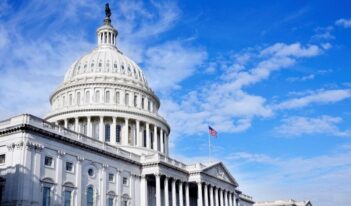
Reluctance by Education officials to exercise their debt cancellation powers unfairly punishes students.
Like Caesar’s Gaul, the U.S. Department of Education’s debt cancellation can be divided into three parts. The first allows the Education Department to discharge debt for a narrow group of student debtors in extreme situations: students with permanent and total disabilities and families of those who perished during the 9/11 terror attacks. Another set of discharge rights belongs to student debtors whose schools have failed them, either because the school closed or if the student can demonstrate wrongdoing by the educational institution under certain state laws—known as borrower’s defense arguments. The third debt cancellation category, which I will discuss in a subsequent article, grants the Department a broad discretionary ability to “compromise, waive or release any right” to collect any student’s debt, apparently for any reason whatsoever.
Aside from the rare cases of relief for students suffering from total disability or families of terror attack victims, nearly all of the Department’s decisions to grant or deny discharges have concerned students who attended for-profit colleges. Many students at for-profit colleges present compelling cases for debt relief: they tend to come from more disadvantaged socioeconomic backgrounds, to have taken on more debt, and face more difficulty entering the job market than students at traditional, non-profit educational institutions.
 Given the Department’s responsibility for student debt collection, putting these powers to work means the it foregoes some of the revenue that it is charged with collecting. Because Education officials are charged with maintaining the agency’s bottom line, their reluctance to employ the debt-cancellation powers should come as no surprise.
Given the Department’s responsibility for student debt collection, putting these powers to work means the it foregoes some of the revenue that it is charged with collecting. Because Education officials are charged with maintaining the agency’s bottom line, their reluctance to employ the debt-cancellation powers should come as no surprise.
The basic policy justification for permitting student debt is that the return on investing in a college degree substantially surpasses the costs of financing it. Yet students at for-profit colleges have found that their degrees yield worse results on the job market than having no degree at all. Multiple investigations and law enforcement actions have testified to this fact.
To paper over these bad results, many for-profit colleges engage in systematic fraud to attract students. Indeed, some for-profit institutions spend nearly a quarter of their budgets on advertising that promises results their leaders know they cannot deliver. High-pressure sales tactics also perpetuate for-profit college enrollment. When regulators begin sniffing around, several of these schools have toppled into bankruptcy.
On paper, the Department’s defense-to-repayment and closed-school-discharge authorities should provide the perfect remedy for students defrauded by for-profit institutions. And yet for decades, even as lawsuits and congressional investigations into for-profit institutions’ wrongdoing piled up, the Department seemed to remain in denial. The regulations it published in 1994 to implement its defense-to-repayment authority had minimal impact, with the Department failing to establish even applications or an adjudication process. In fact, until the recent disclosures that it had made under the Freedom of Information Act, the Department had not publicly acknowledged the few resourceful students who had attempted to take advantage of their rights to debt discharge.
Last year an organized group of for-profit college students worked with Debt Collective—for which I serve as Legal Director—to pressure Education officials to recognize their discharge rights. These students had attended campuses of Corinthian Colleges, once one of the largest for-profit college chains in the United States. Corinthian had collapsed into bankruptcy under the pressure of unprecedented regulatory scrutiny. Its former students began to assert their rights to defense to repayment and closed school discharges. With help from attorneys, students advocating for defense of repayment discharge created their own discharge application, since the Department did not even have one.
When the student’s claims became too loud to ignore, then-Secretary of Education Arne Duncan publicly announced that students would receive “every penny of the debt relief they are entitled to.” The Department, however, then went about crafting arguments about why only a small percentage of these students were entitled to relief.
For example, education officials restricted their discharge findings to students who had debt from what are known as federal direct loans. This limitation excluded, by my estimate, over a quarter of the debt at issue, including what are known as FFEL loans. This assertion directly contradicted the Department’s previous statements that FFEL and Direct Loans always would be treated equally.
Students seeking relief under the closed school discharge encountered similar resistance from the Department. Instead of shutting down all of Corinthian’s campuses, the Department arranged for a sale of most of them, resulting in a perpetuation of fraud. Even at closing schools, officials urged students to finish their education at another institution that would accept tuition credits from the closed college. The problem: only other for-profit colleges would accept these credits, effectively shuttling the students from one predatory entity to another.
The Department had the authority to simply cancel all of the debts of former Corinthian students for which it had evidence of wrongdoing. Despite more than one year of work, as of this writing, the Department has canceled just 6 percent of that debt.
At least based on my discussions with advocates and Departmental officials, I think the Department’s appeal to purported legal limits on its power seems like a cover story. If Education officials convince students that their hands are tied, then they can limit relief without taking political flack for failing to fulfill its mission of protecting vulnerable students. Because far more defrauded students wait in the wings, perhaps the Department’s decision to limit debt relief for Corinthian students is meant to keep the floodgates from opening.
This essay is part of a four-part series, The Department of Education’s Power to Cancel Student Debt.




